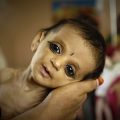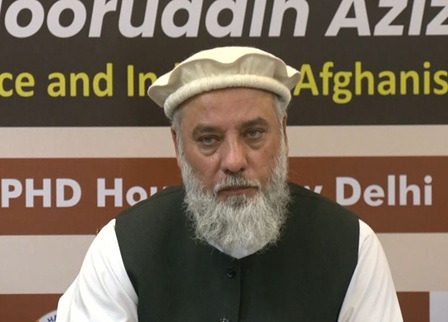
By : Mirwais Jalalzai
Afghanistan today is without a doubt the most dangerous place to be born.
The war in Afghanistan is the world’s longest-running major armed conflict. 2016 saw a substantial increase in civilian casualties and displacement which is continuing. The fighting is currently between the Afghan Security Forces and the Taliban, al-Qaeda, the Haqqani Network and Islamic State militants.
The widespread conflict impacts the lives of at least 9 million people spicily in southern Helmand, Kandahar, Zabul, Kunduz, Baghlan, Nangarhar and Takhar provinces more than half of them are children.
Takeover of Kunduz province by Taliban in last September was a bright example of where many civilians including children and women burned like fire -wood between Taliban and pro-governmental forces.
More than 250 civilians died just in 72 hours in Kunduz city most of them children and women.
People have been displaced in 27 provinces since the beginning of this year and will be facing increased hardship and malnutrition and over half of the displaced are children.
United Nation Assistance Mission in Afghanistan (UNAMA) documented more than 6000 civilian casualties since the beginning of the year.
The intensifying of the conflict is having dire consequences for children. One-quarter of all civilian casualties are now children.
Children represent the fastest growing group in civilians killed and injured in Afghanistan’s long-running armed conflict.
According to UNAMA, documents 639 conflict-related deaths and 1,822 injuries among children in the first nine months of this year – 15 percent higher than the same period in 2015, which was also a record-setting year for deaths and injuries to children. In fact, child casualties in Afghanistan have risen every year since 2013.
Ground fighting between Taliban and Afghan government forces, which has increased as more districts have become battlegrounds, caused more than half of all child casualties in 2016. Moreover, 84 percent of civilians killed or injured by unexploded ordnance were children. These de facto landmines, which detonate on contact, remain lethal for months or years after the fighting ends, turning open areas into minefields.
Internally displaced children and populations in conflict-affected areas, in particular are at risk of child recruitment by armed groups, including the Taliban, Haqqani network, Hezb-i-Islami and ISIS. In 2016 the verified recruitment and use of children more than doubled compared to 2015, 215 boys and 1 girl.
Children are being detained for alleged association with armed groups by the Afghan government and by the international security forces.
At the beginning of 2016 the Ministry of Justice reported that 214 boys had been detained in juvenile rehabilitation centers on charges relating to national security and 166 detainees arrested as children were still being held at the Parwan detention facility, 53 still under the age of 18.
The Parwan Facility was transferred to the Afghan authorities by the international forces in 2013. There is concern that children are being held in a high-security prison for adults without due process and are frequently subjected to solitary confinement. Many children have no legal assistance or legal documentation, and some have reported threats and torture during interrogation.
The Taliban remain responsible for most civilian casualties. Despite Taliban claims that protecting civilians is one of their main aims, the armed group continues to pursue a strategy of suicide bombings against civilians and attacks on populated areas. However, groups claiming affiliation with the Islamic State (also known as ISIS) were responsible for some of the worst atrocities of this nine-month period, including the July 23 attack on mainly ethnic Hazara protesters in Kabul that killed at least 85 people and injured more than 400, making it the single deadliest attack since 2001.
Civilian casualties caused by government forces have also risen sharply, with 623 civilian deaths and 1,274 injuries attributable to the Afghan military and other pro-government forces – a 42 percent increase from last year. A growing number of these are the result of airstrikes, as well as the use of indirect explosive weapons in populated areas.
Unless all parties to the conflict in Afghanistan take urgent steps to abide by the laws of war, civilians – especially children – will continue to pay the price.









